School’s back in session and fall is upon us. I don’t know about you, but I am ready for some cool crisp weather!
One of the things I miss as summer transitions to fall is the bounty of beautiful bright flowers growing around every corner. Last year I picked some late summer/early fall garden flowers and greens to make this transitional summer to fall arrangement.
Highlighted in an amber drinking glass are pretty brightly colored Dahlias, textured seedy stems leftover from a Chaste Tree’s blossoms, muted burgundy sedum, and the golden/copper toned hues of a Nandina bush.
I’m not one for a typical fall color palette of bright oranges, yellows, and reds but I am absolutely smitten with this bight & muted palette of pinks, burgundy, and gold.
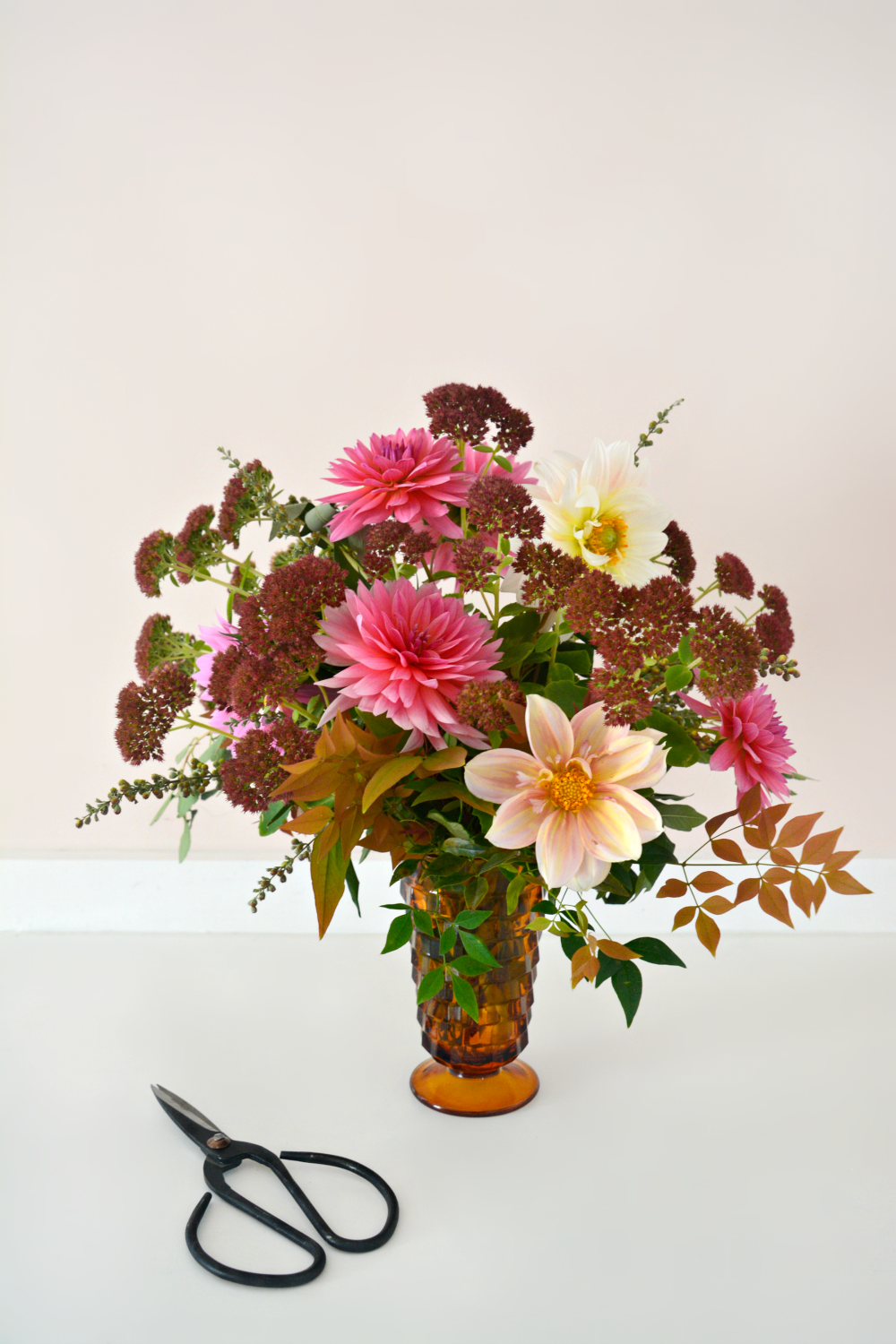
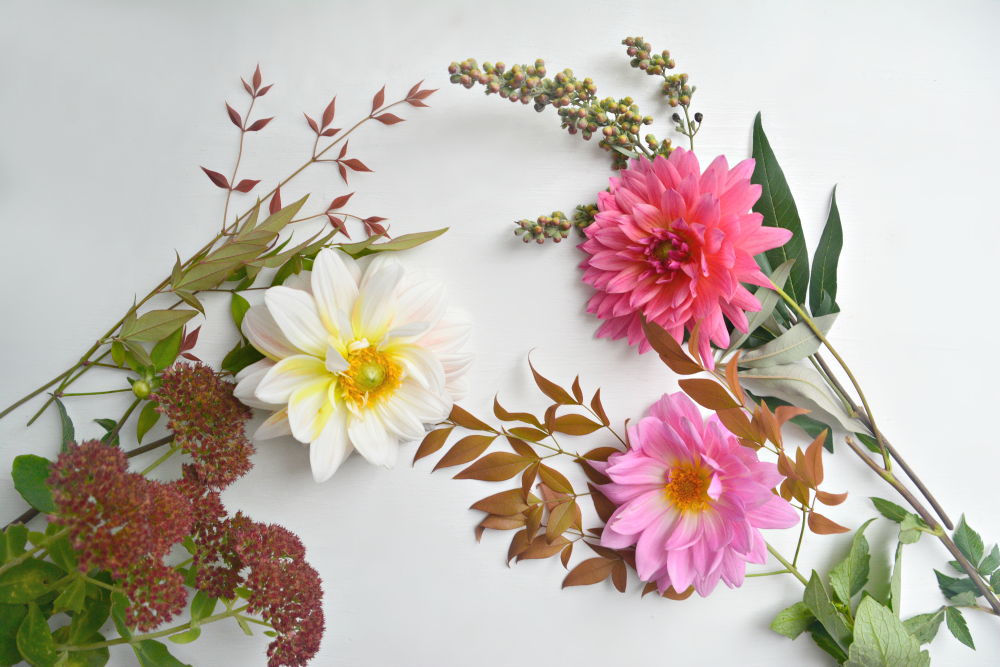
To make this arrangement you will need:
Flowers and Greens (clockwise from bottom LEFT)
- Sedum – Autumn Joy
- Dahlia – Apple Blossom
- Nandina – green/copper leaves
- Chaste Tree (Vitex) – after bloom
- Pink Dahlias – assorted
- Nandina – gold leaves
- Spirea – scallop edged greens
We appreciate the use of the following provided Amazon affiliate product links. We receive a small commission from Amazon at no extra cost to you, which allows us to bring more new an exciting projects to our readers.
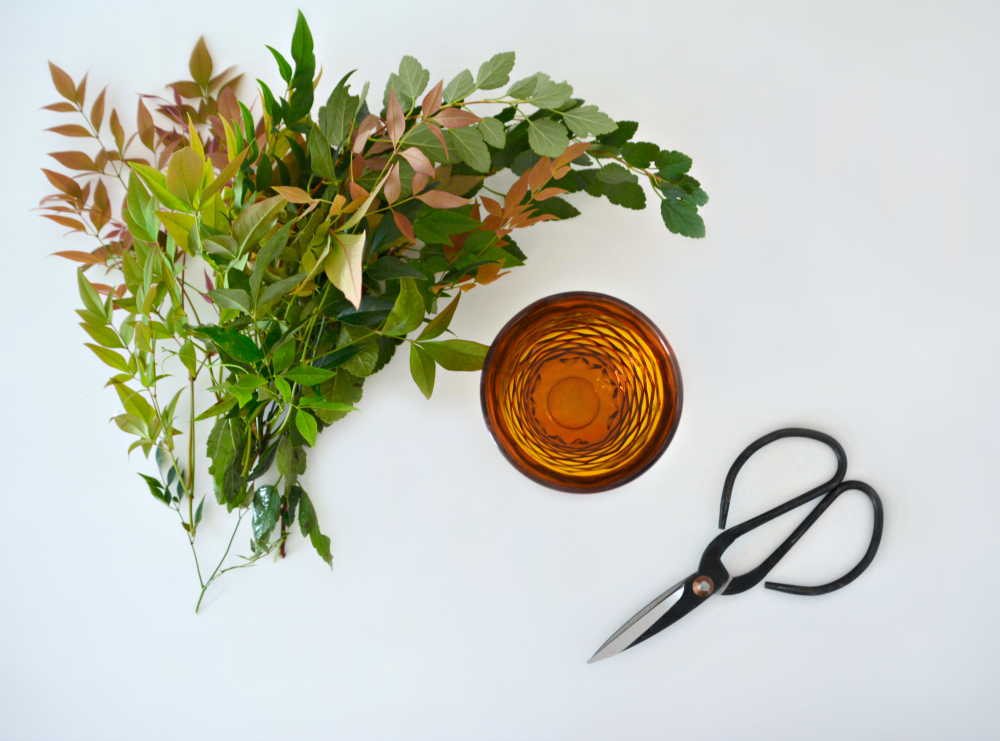
Step 1: Fill the glass with clean, cool water. Strip the base leaves off each stem of greens (Nandina & Spirea) and place in the glass criss-crossing stems to create a grid/support for the flowers. Work with the shape and flow of the stems to create a full and balanced base. Allow some pieces to trail or extend out further than others. This creates texture that keeps the arrangement from appearing too flat.
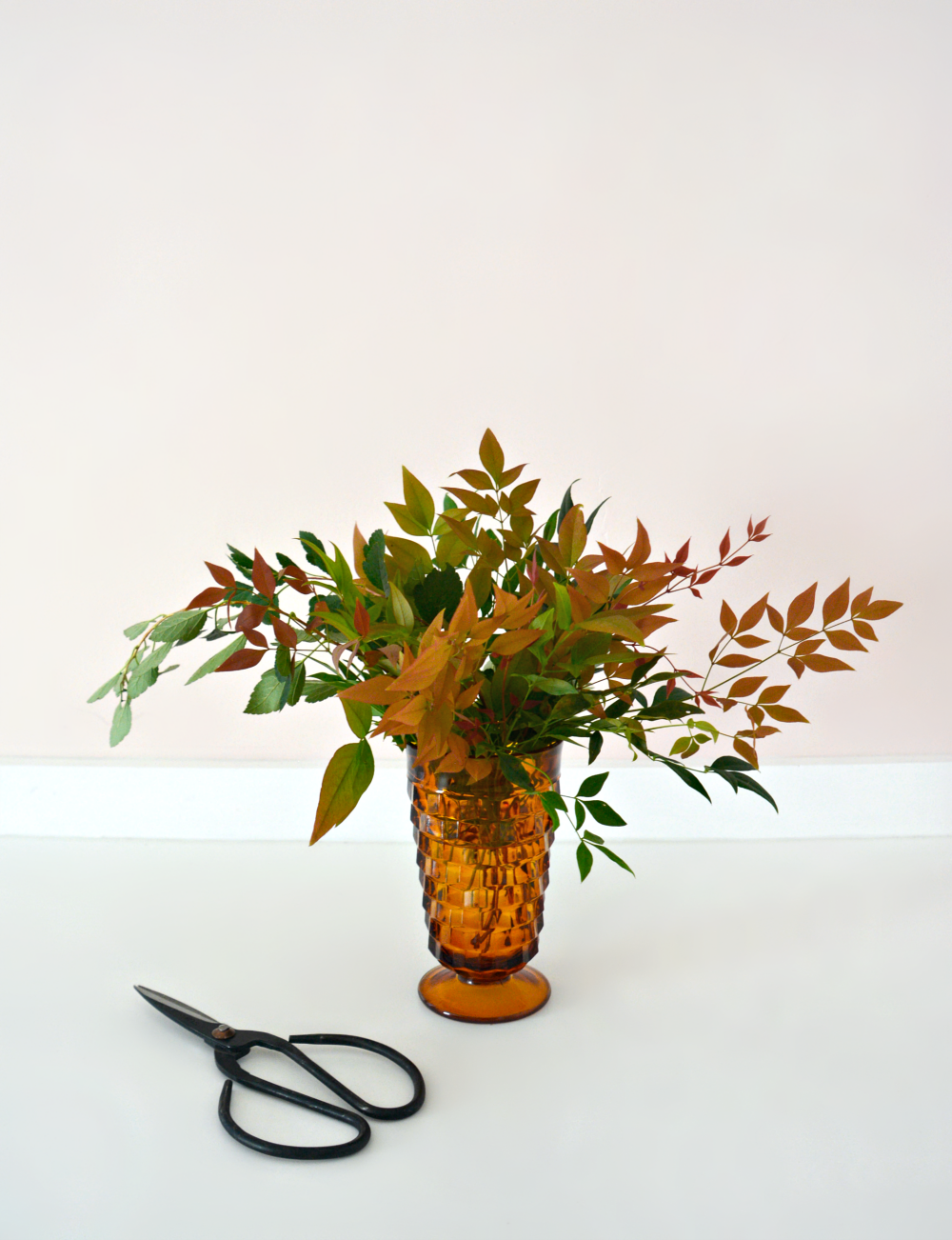
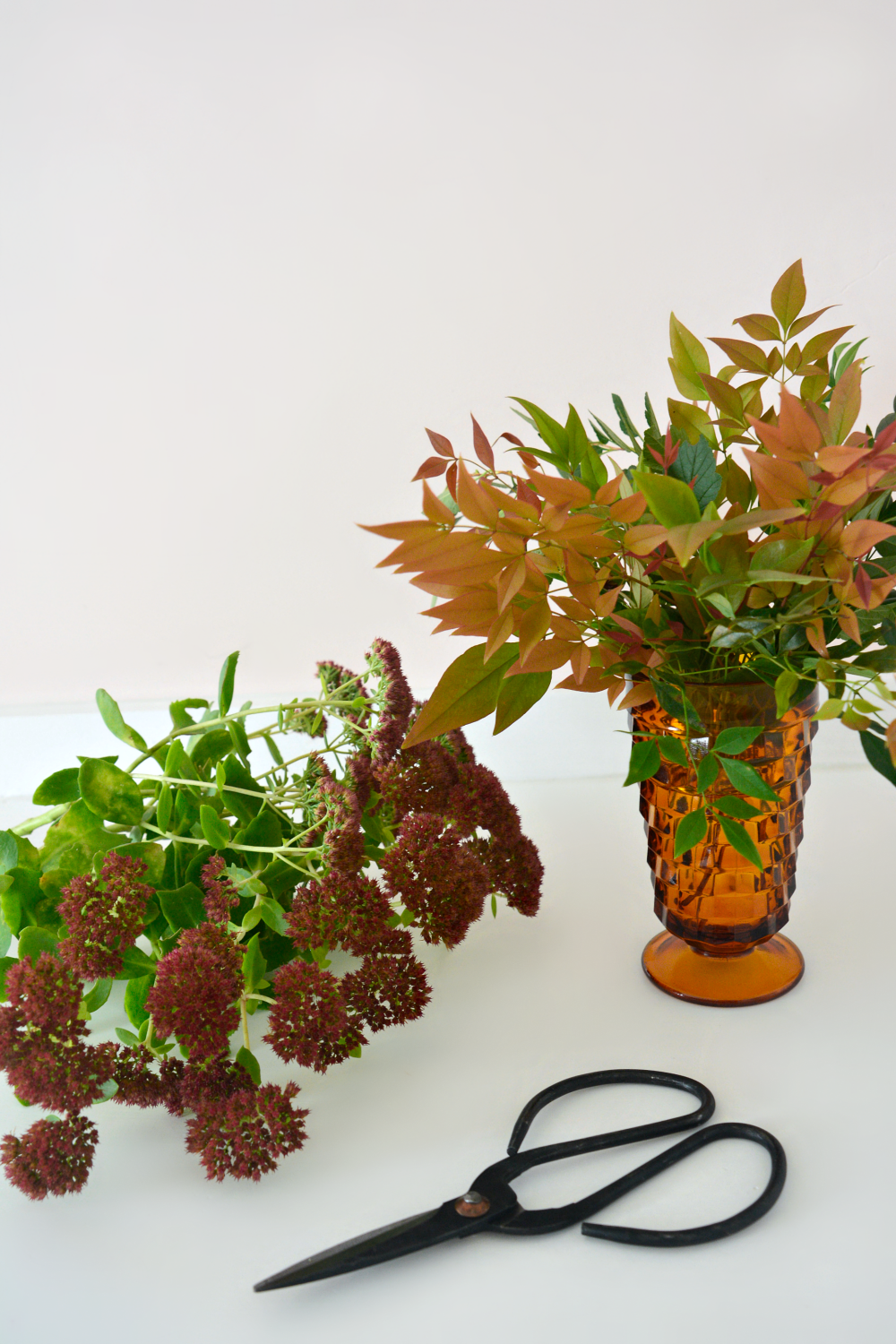
Step 2: For this arrangement I decided to start with the secondary “filler” flowers (Sedum). The Sedum stems are fairly substantial and have multiple offshoots/clusters of blooms on each stem so placing them first provided further support for the focal flowers and ensured that the arrangement wouldn’t be damaged if a stem needed to be repositioned. When you have a limited supply of focal flowers (which tends to be the case when you’re arranging from the supply of a personal garden) it’s important to limit how much they are bumped and handled so they don’t get bruised or torn rendering them unusable. As with the greens place the filler flowers all the way around the glass and at varied heights to produce texture and interest.
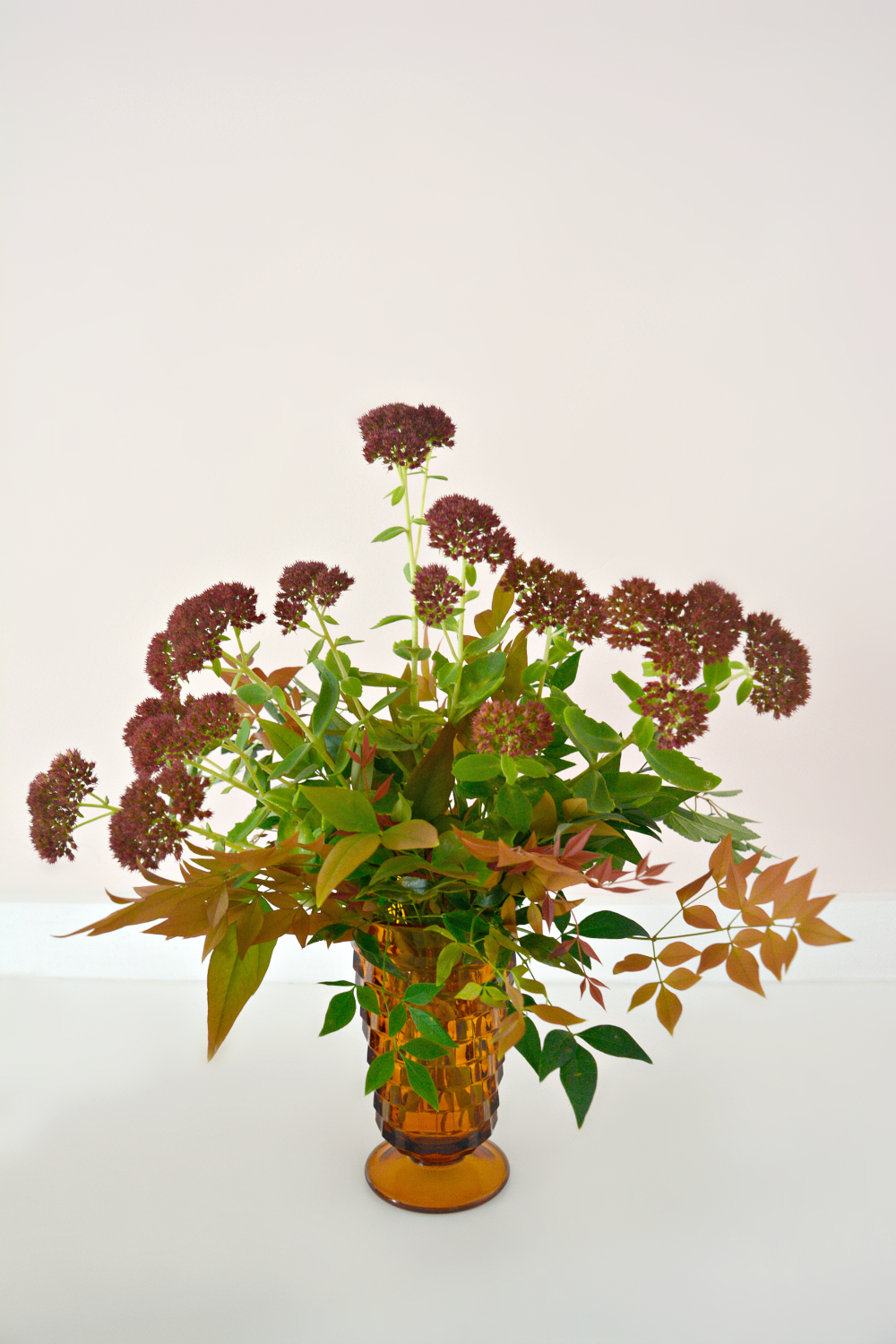
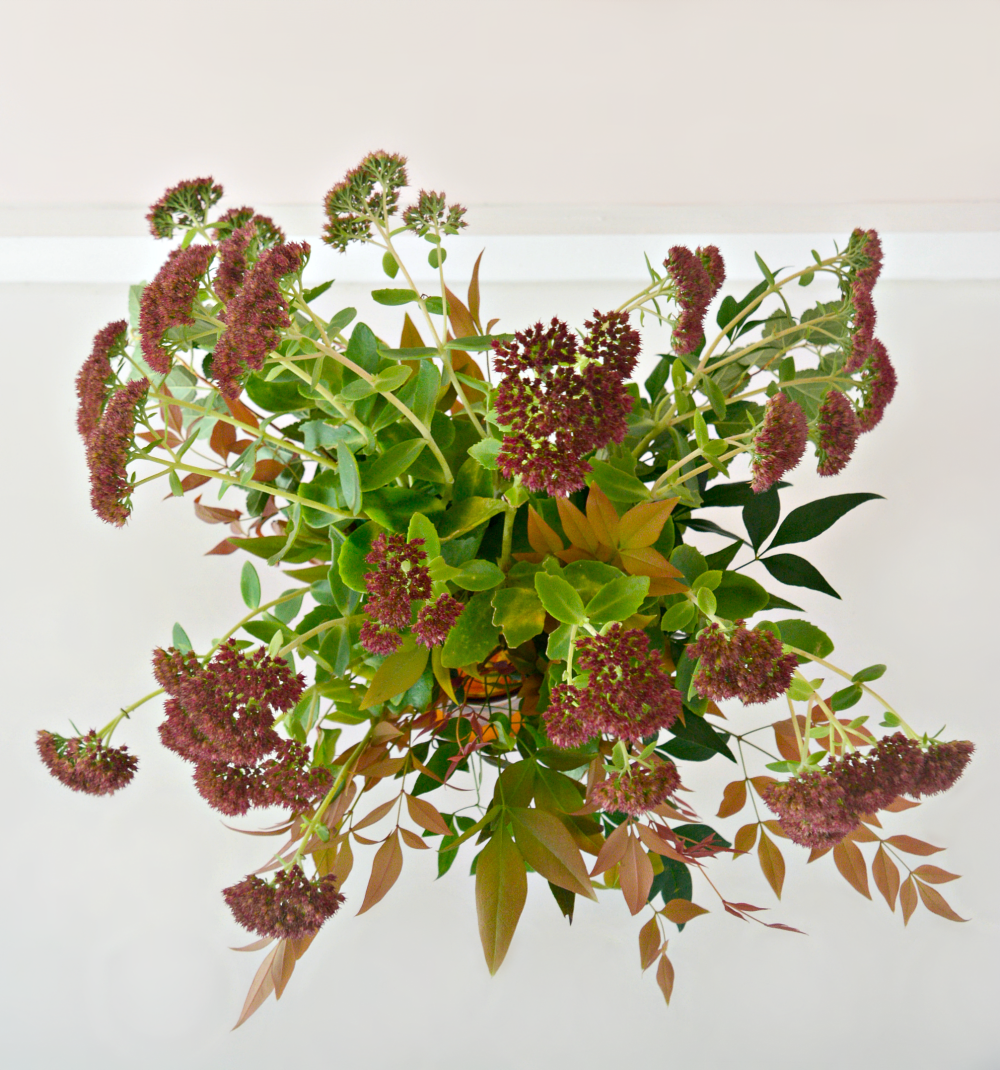
Step 3: Time to place the focal flowers, the Dahlias! Work around the glass spacing out stems of the same variety or color. Work with the directionality of each bloom. Blooms that face directly upward are great for the top/center of the arrangement whereas blooms facing on angles will be better for the sides. Swaying/draping stems are perfect to use on the lower outskirts of the arrangement.
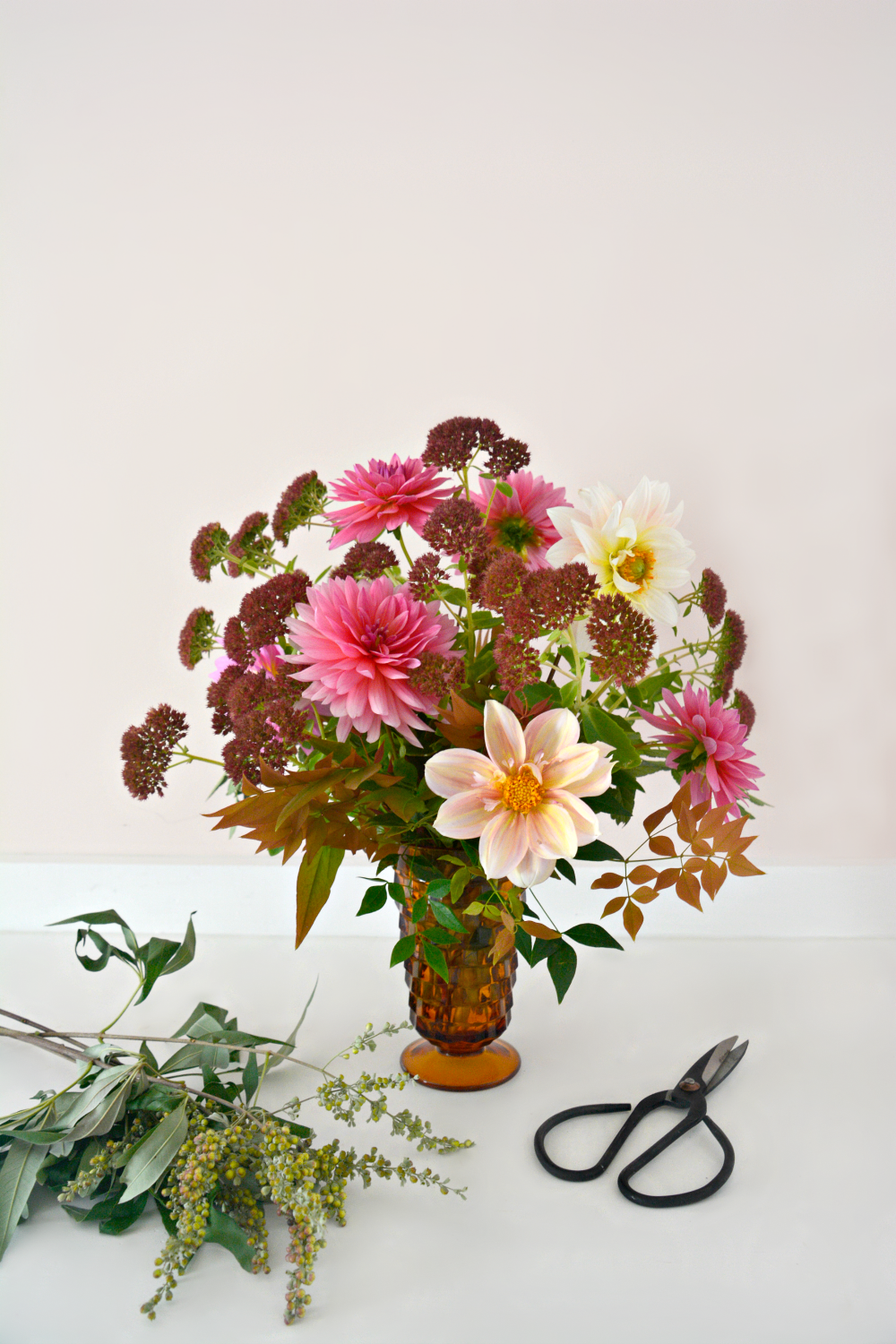
Step 4: Fill in the arrangement with secondary fillers, spike flowers, and/or textural elements (Chaste Tree – after bloom- seeded spike).
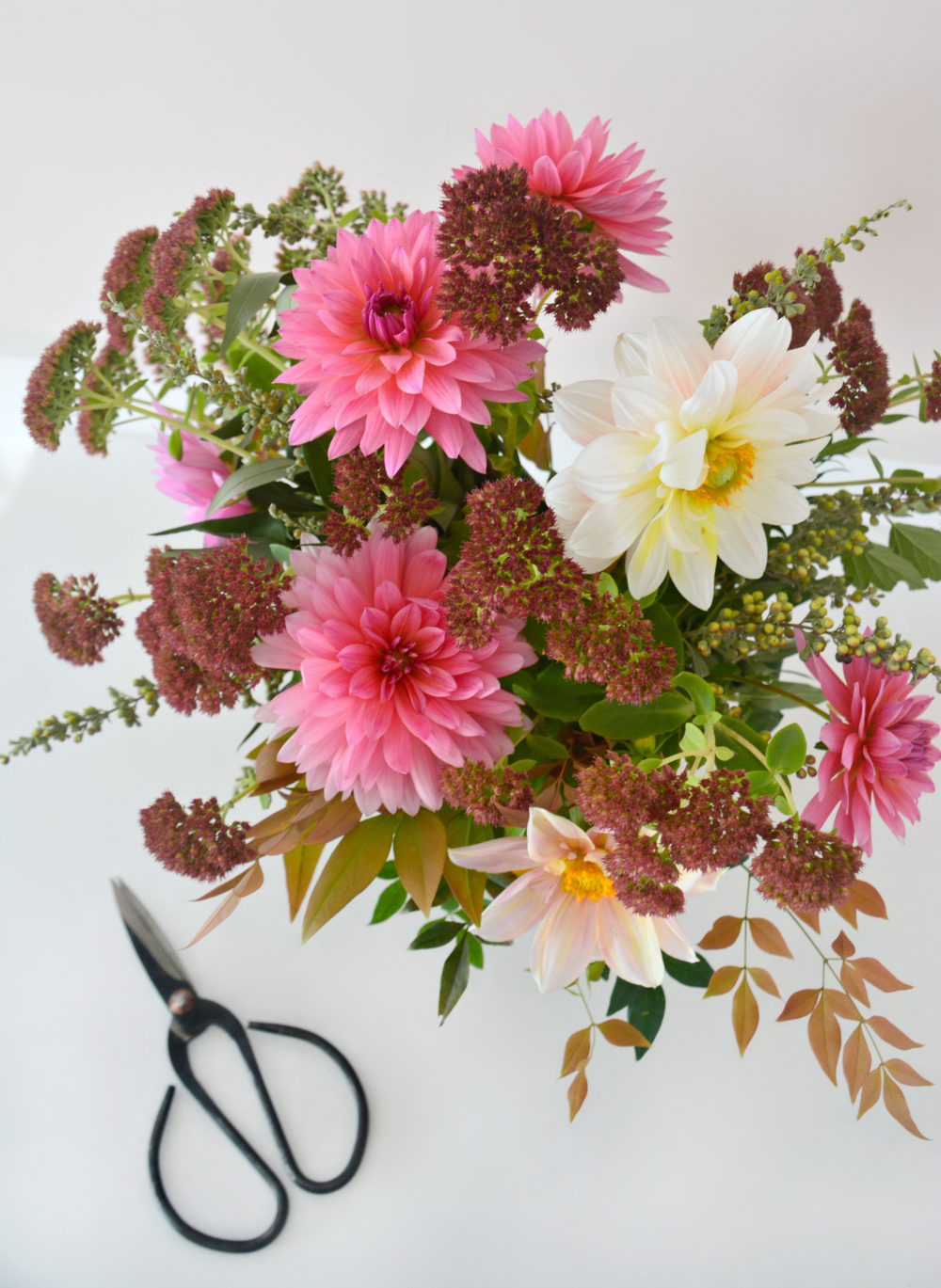
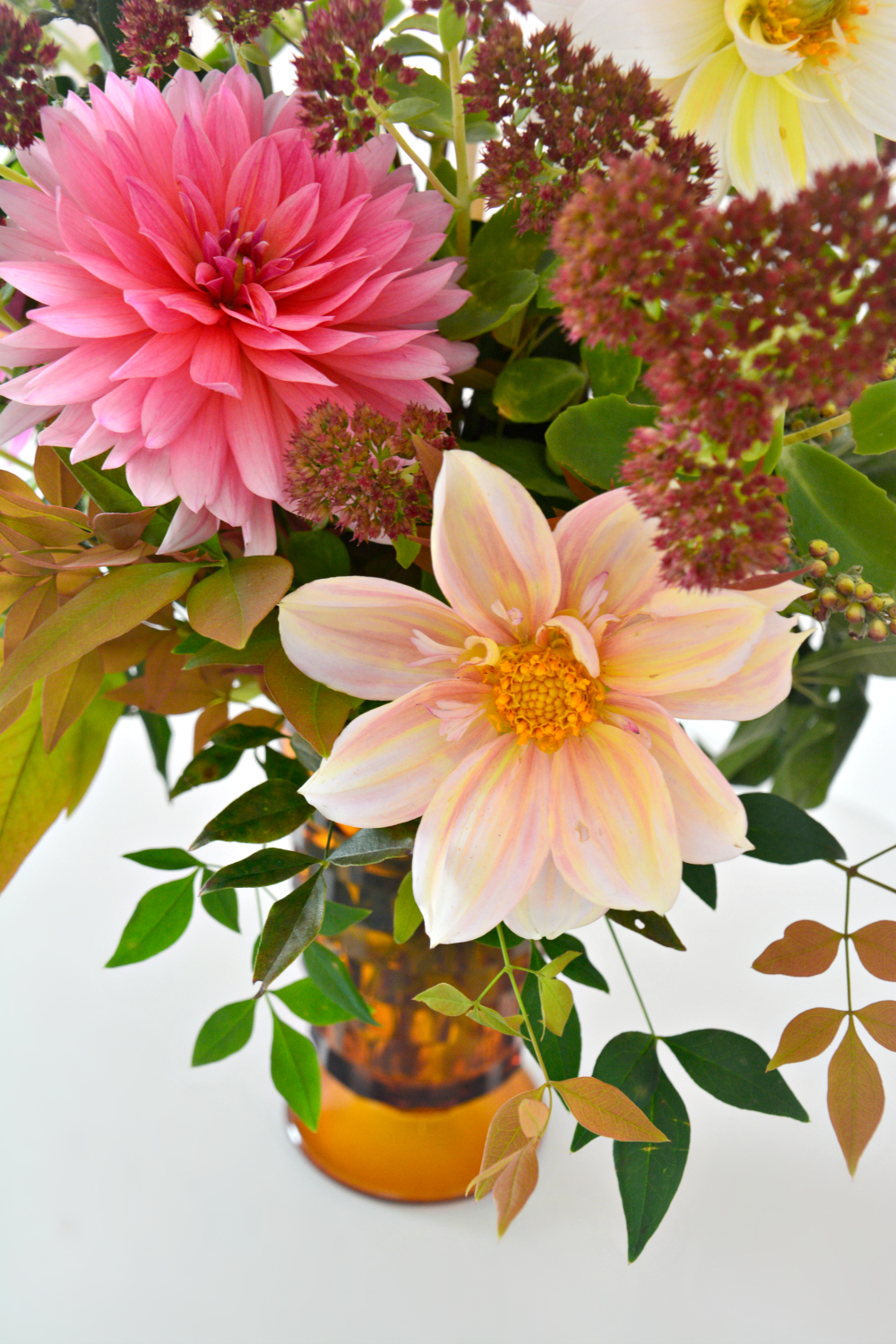
After you’ve made a beautiful arrangement don’t forget to take care of it for the next few days. Make sure to keep the water filled and remove any stems that go bad. You can either remove a bad stem and “fluff” the arrangement to fill in the void OR grab a fresh stem from the garden to replace any stem removed.

Thanks for stopping in today!
![]()
Amazon Affiliate Product Links:


